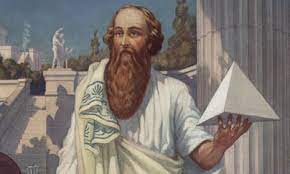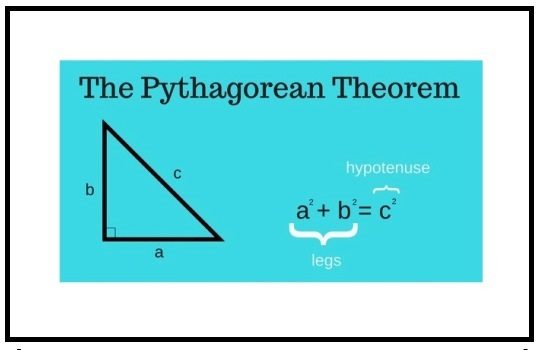People that has change the world by their work
Pythagoras
Plato |Phylosophy
Biography Mother Teresa
Art, Theater
Elvis Presley was the Rock n Roll music star
Christopher Reeve was most successfully act as Superman
Martin Luther, (born November 10, 1483, Eisleben, Saxony [Germany]—died February 18, 1546, Eisleben), German theologian and religious reformer who was the catalyst of the 16th-century Protestant Reformation. Through his words and actions, Luther precipitated a movement that reformulated certain basic tenets of Christian belief and resulted in the division of Western Christendom between Roman Catholicism and the new Protestant traditions, mainly Lutheranism, Calvinism, the Anglican Communion, the Anabaptists, and the Antitrinitarians. He is one of the most influential figures in the history of Christianity.
Soon after Luther’s birth, his family moved from Eisleben to the small town of Mansfeld, some 10 miles (16 km) to the northwest.
His father, Hans Luther, who prospered in the local copper-refining business, became a town councillor of Mansfeld in 1492.
There are few sources of information about Martin Luther’s childhood apart from his recollections as an old man; understandably,
they seem to be coloured by a certain romantic nostalgia.
Luther began his education at a Latin school in Mansfeld in the spring of 1488. There he received a thorough training in the Latin language and learned by rote
the Ten Commandments, the Lord’s Prayer, the Apostles’ Creed, and morning and evening prayers. In 1497 Luther was sent to nearby Magdeburg to attend a school operated
by the Brethren of the Common Life, a lay monastic order whose emphasis on personal piety apparently exerted a lasting influence on him.
Sun Tzu was a general from ancient China.Sun Tzu (l. c. 500 BCE) was a Chinese military strategist and general best known as the author of the work The Art of War, a treatise on military strategy (also known as The Thirteen Chapters).
Mahatma Gandhi was a politic leader from India.
*


Pythagoras theorem states that “In a right-angled triangle, the square of the hypotenuse side is equal to the sum of squares of the other two sides“. The sides of this triangle have been named as Perpendicular, Base and Hypotenuse. Here, the hypotenuse is the longest side, as it is opposite to the angle 90°. The sides of a right triangle (say a, b and c) which have positive integer values,
when squared, are put into an equation, also called a Pythagorean triple.
MORE

Plato, (born 428/427 BCE, Athens, Greece—died 348/347, Athens), ancient Greek philosopher, student of Socrates
(c. 470–399 BCE), teacher of Aristotle (384–322 BCE), and founder of the Academy, best known as the author of philosophical
works of unparalleled influence.
Building on the demonstration by Socrates that those regarded as experts in ethical matters did not have the understanding necessary for a good human life, Plato introduced the idea that their mistakes were due to their not engaging properly with a class of entities he called forms, chief examples of which were Justice, Beauty, and Equality. Whereas other thinkers—and Plato himself in certain passages—used the term without any precise technical force, Plato in the course of his career came to devote specialized attention to these entities. As he conceived them, they were accessible not to the senses but to the mind alone, and they were the most important constituents of reality, underlying the existence of the sensible world and giving it what intelligibility it has. In metaphysics Plato envisioned a systematic, rational treatment of the forms and their interrelations, starting with the most fundamental among them (the Good, or the One); in ethics and moral psychology he developed the view that the good life requires not just a certain kind of knowledge (as Socrates had suggested) but also habituation to healthy emotional responses and therefore harmony between the three parts of the soul (according to Plato, reason, spirit, and appetite). His works also contain discussions in aesthetics, political philosophy, theology, cosmology, epistemology, and the philosophy of language. His school fostered research not just in philosophy narrowly conceived
but in a wide range of endeavours that today would be called mathematical or scientific.
Their particular contribution was in the effective control of an aeroplane, through their three-axis control system. This basic principle is still used today. It was for this control mechanism that the Wright’s received their first US patent – 821,393.
MORE

Image from Wikimedia
Mother Teresa (1910–1997) was a Roman Catholic nun who devoted her life to serving the poor and destitute around the world. She spent many years in Calcutta, India where she founded
the Missionaries of Charity,
a religious congregation devoted to helping those in great need. In 1979, Mother Teresa was awarded the Nobel Peace Prize and became a symbol of charitable,
selfless work. In 2016, Mother Teresa was canonised by the Roman Catholic Church as Saint Teresa.
MORE

Image: www.nytimes.com
Born: March 22, 1923, Strasbourg, France
Died: September 22, 2007, Cahors, France
Marcel Marceau was a French actor and mime artist most famous for his stage persona, "Bip the Clown".
He referred to mime as the "art of silence" and he performed professionally worldwide for over 60 years.

Mute Movie

It's now or never

Foreign Resto

Image from Wikimedia
In 1501 he matriculated at the University of Erfurt, at the time one of the most distinguished universities in Germany. The matriculation records describe him as in habendo, meaning that he was ineligible for financial aid, an indirect testimonial to the financial success of his father. Luther took the customary course in the liberal arts and received the baccalaureate degree in 1502. Three years later he was awarded the master’s degree.
His studies gave him a thorough exposure to Scholasticism; many years later, he spoke of Aristotle and William of Ockham as “his teachers.â€
MORE

He was associated (formally or as an inspiration) with The School of the Military, one of the philosophical systems of the Hundred Schools of Thought of the Spring
and Autumn Period (c. 772-476 BCE), which advocated military preparedness in maintaining peace and social order.
Whether an individual by the name of Sun-Tzu existed at all has been disputed in the same way scholars and historians debate the existence of his supposed contemporary Lao-Tzu (l. c. 500 BCE), the Taoist philosopher. The existence of The Art of War, however, and its profound influence since publication clearly proves that someone existed to produce said work, and tradition holds that the work was written by one Sun-Tzu.
His historicity would seem to have been confirmed by the discovery in 1972 CE of his work, as well as that of his apparent descendant, Sun Bin (d. 316 BCE) who wrote another Art of War, in a tomb in Linyi (Shandong province). Scholars who challenge his historicity, however, still claim that this proves nothing as the earlier Art of War could still have been composed by someone other than Sun-Tzu.

All The Legends in Their Work and World 1-10 (Part 1)
All The Legends in Their Work and World 11-20 (Part 2)
All The Legends in Their Work and World 21-30 (Part 3)
All The Legends in Their Work and World 31-40 (Part 4)
All The Legends in Their Work and World 41-50 (Part 5)
All The Legends in Their Work and World 51-60 (Part 6)
All The Legends in Their Work and World 61-70 (Part 7)
All The Legends in Their Work and World 71-80 (Part 8)
All The Legends in Their Work and World 81-90 (Part 9)
All The Legends in Their Work and World 91-100 (Part 10)